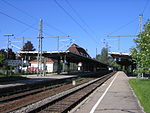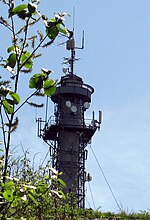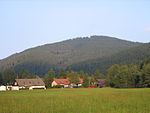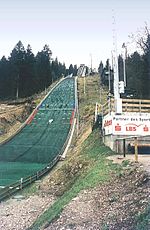Höllentalbahn (Black Forest)

The Höllentalbahn (literally, "Hell Valley Railway") is a railway line that partially runs through the Höllental valley in the Black Forest of Germany. The line connects Freiburg im Breisgau with Donaueschingen, a distance of 74.7 km (46.4 mi).Over its entire course the line rises from an altitude of 278 m (912 ft) in Freiburg to 885 m (2,904 ft) in Hinterzarten. Part of the route has a 5.5% gradient, making the line one of the steepest in Germany. The section Freiburg-Neustadt is electrified since 18 June 1936. Because of this and the steady decrease of traffic between Neustadt and Donaueschingen the route did not represent an operational unit anymore. The last direct connection between Freiburg and Donaueschingen ended in 2003 with the Kleber-Express Freiburg-Munich being discontinued. The missing section was electrified until the end of 2019 in the course of the project “Breisgau-S-Bahn 2020”, in order to enable direct trains from Breisach via Freiburg, Neustand and Donaueschingen to Villingen.
Excerpt from the Wikipedia article Höllentalbahn (Black Forest) (License: CC BY-SA 3.0, Authors, Images).Höllentalbahn (Black Forest)
Rieslehofweg, Titisee-Neustadt
Geographical coordinates (GPS) Address Nearby Places Show on map
Geographical coordinates (GPS)
| Latitude | Longitude |
|---|---|
| N 47.9025 ° | E 8.1586111111111 ° |
Address
Rieslehofweg 14
79822 Titisee-Neustadt
Baden-Württemberg, Germany
Open on Google Maps










